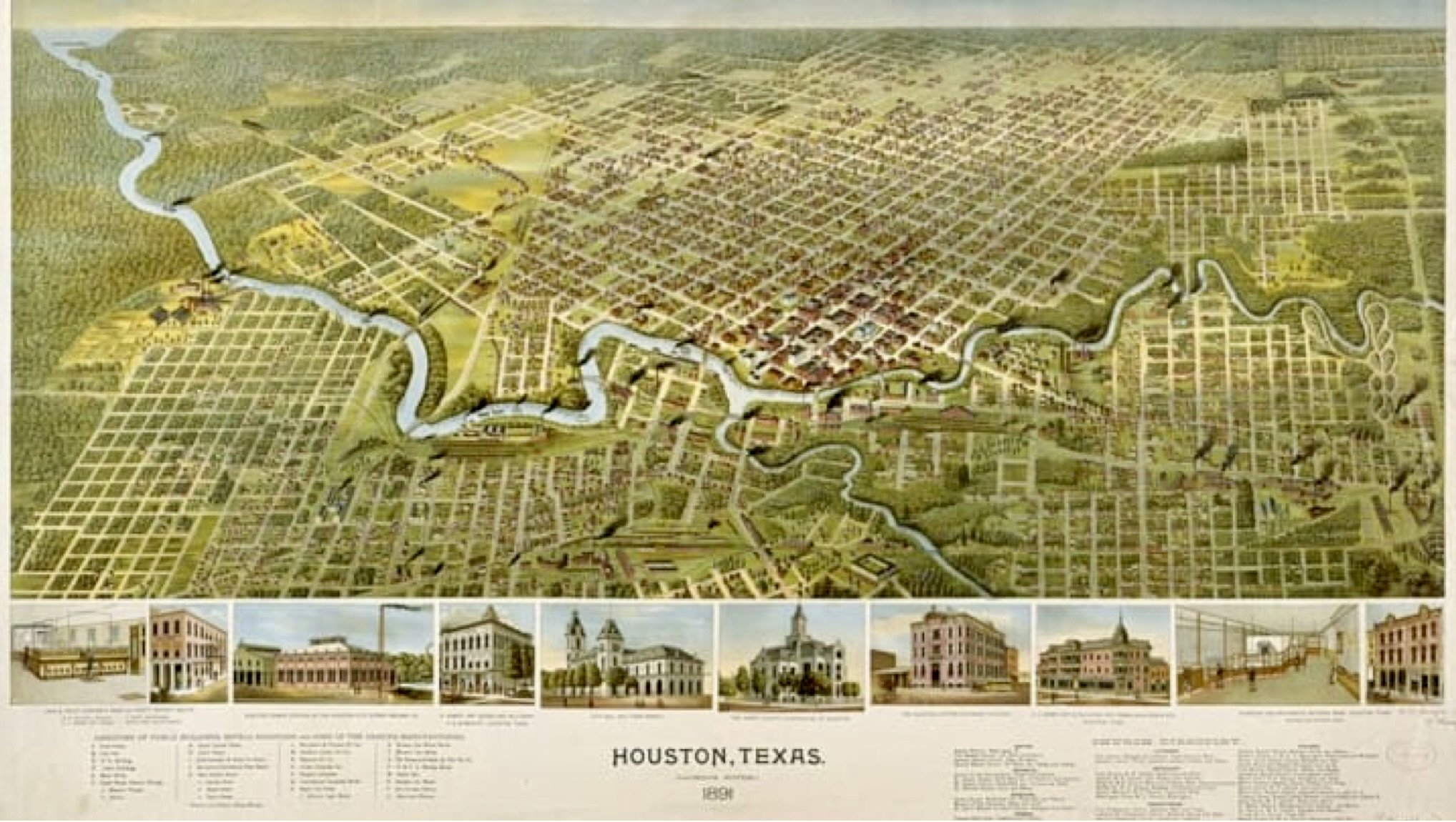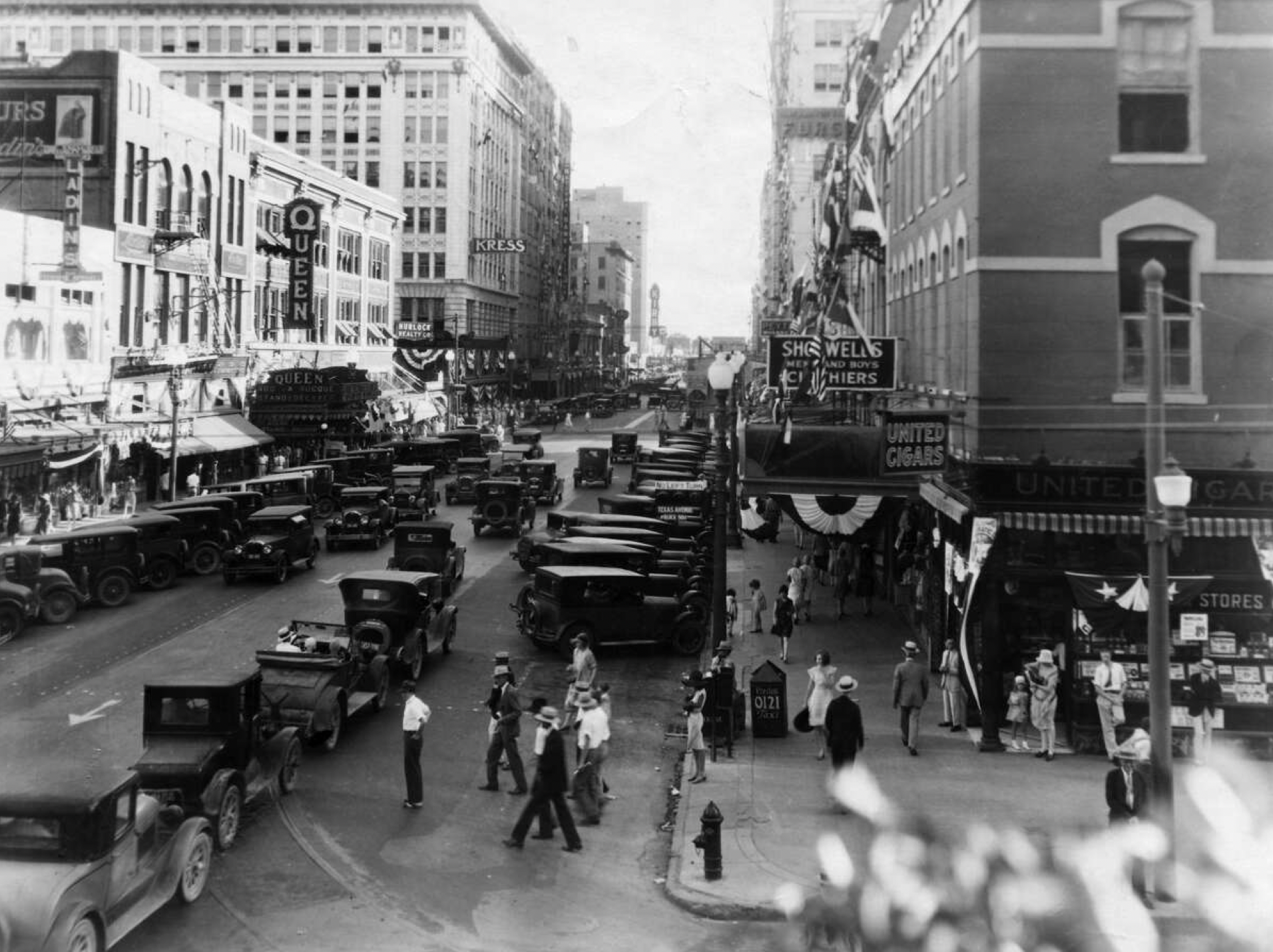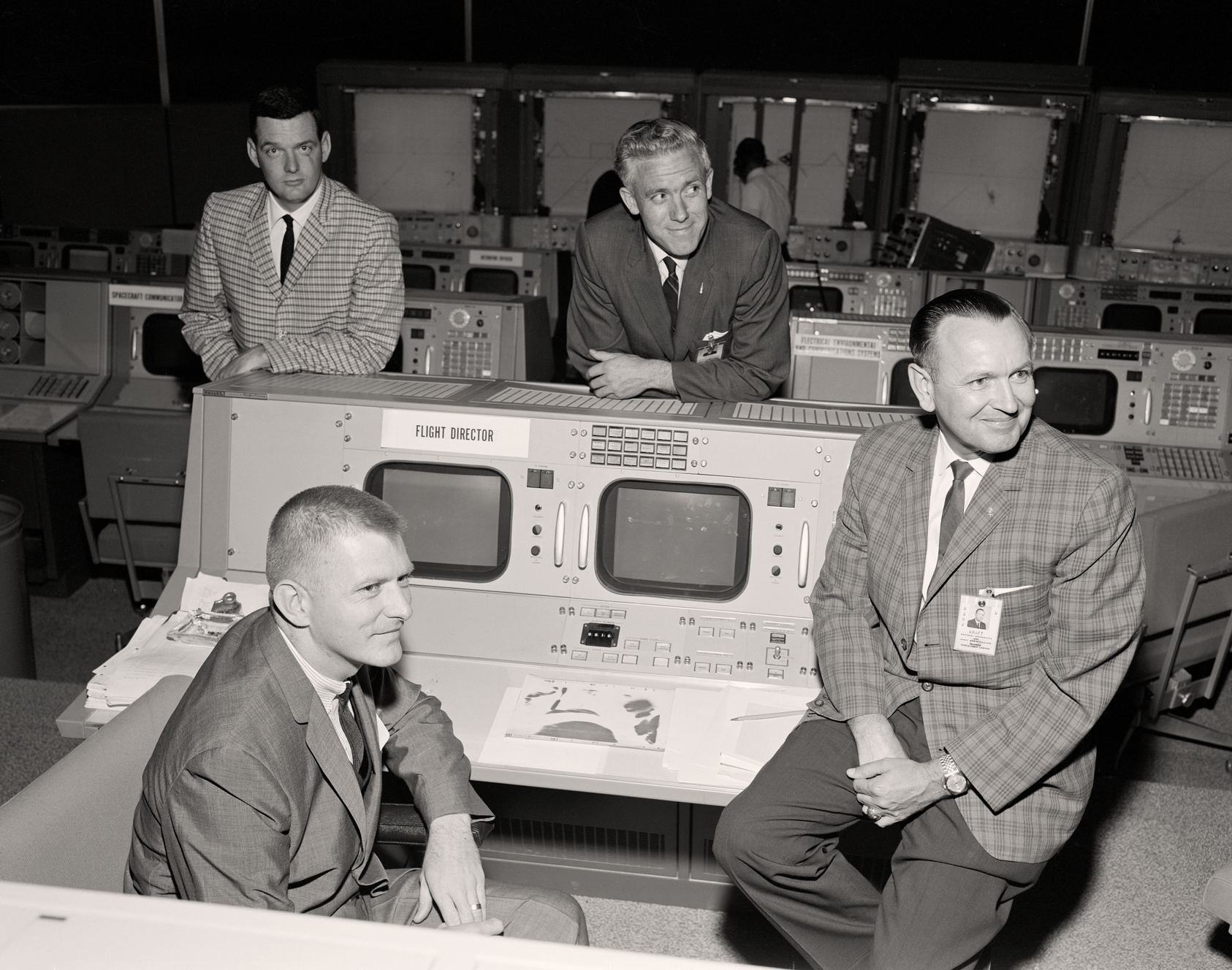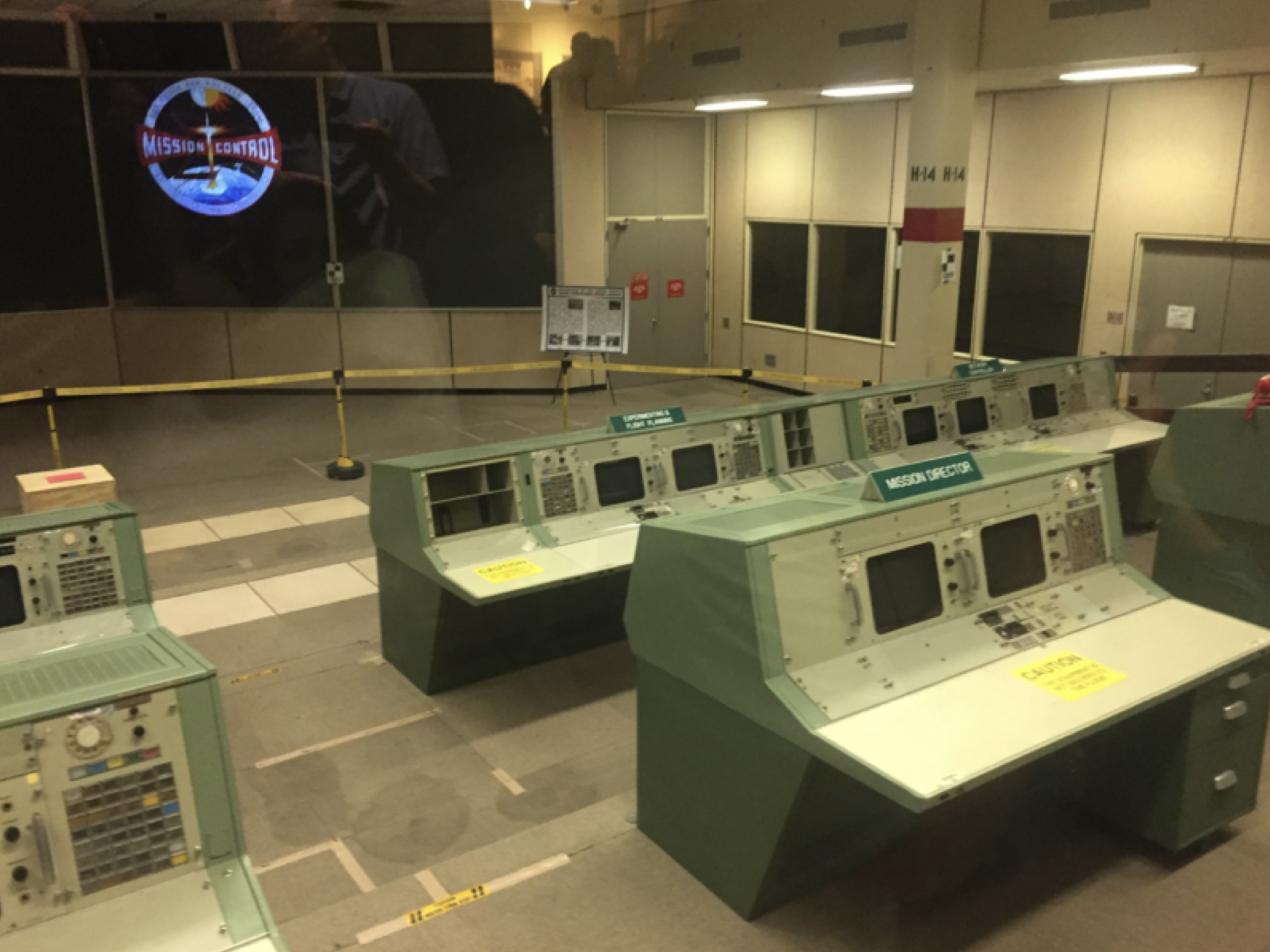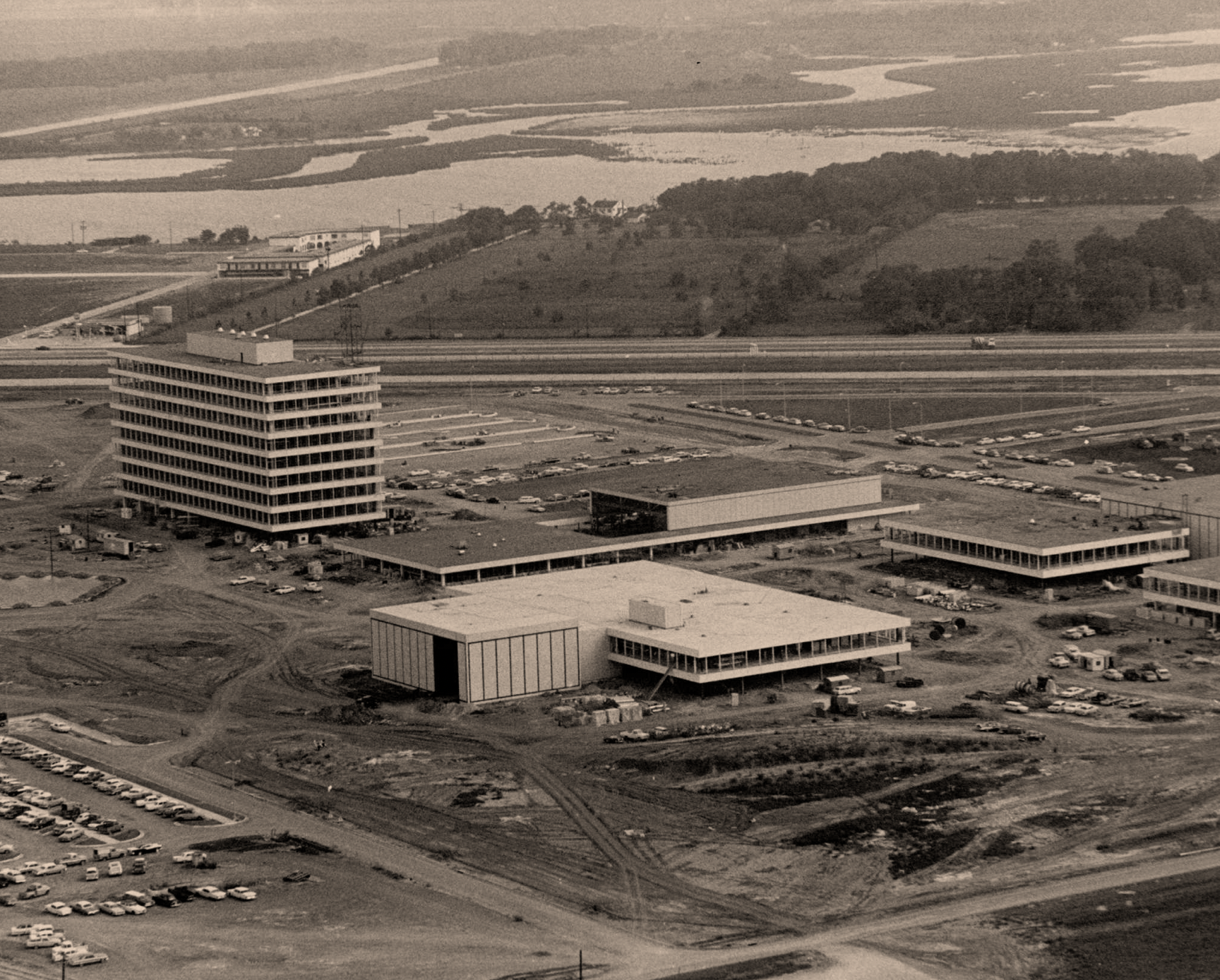Unbeknownst to either, NASA and scientist Joan Oró trajectories converged in Houston, Texas. This convergence led to scientific breakthroughs in the origin of life and the exploration of the Moon and Mars. The fundamental question: Why Houston?
THE FOUNDATION OF HOUSTON
1891 map of Houston, Texas - Wikimedia Commons
In 1832, the Allen brothers, Augustus and John, moved from Canfield, New York, to Galveston, Texas. A few years later, the brothers moved to Nacogdoches, TX, where an association with some entrepreneurs influenced them to become land speculators. The brothers “purchased six thousand acres of land running along Buffalo Bayou three years later.” There they laid out a plat between the White Oak and Buffalo Bayous. The new town was named for General Sam Houston, the leader of the Texian Army’s victory at the Battle of San Jacinto. Houston was chartered in 1837.
While growth was initially slow, in 1848, Houston grew on a path that would lead it to become the nation’s fourth-largest city. The key drivers in this early phase were the creation of the 872-mile Houston and Texas Central Railway (H&TC) and the proximity and access to the Gulf via Buffalo Bayou.
During this era, Galveston was the largest town in Texas. However, the deadly 1900 Hurricane - also called the Galveston Flood and the Great Galveston Hurricane - changed Galveston’s fortunes. Furthermore, the Houston Ship Channel completion in September 1914 gave Houston access to the gulf, further accelerating Houston’s growth, which soon exceeded any other Texas city.
Houston’s growth further accelerated following WWI. A burst of construction led to an increased height of Houston’s new buildings. 1930 saw the construction of Houston’s then-largest building, the Merchant’s and Manufacturer’s Building, which today serves as part of the campus of the University of Houston Downtown. By the 1950’s older buildings were periodically taken down and usually turned into parking lots or new office buildings.
View of Texas Avenue and Main street, the center of the retail business district.
George Rinhart/Corbis via Getty Images
THE FOUNDATION OF RICE UNIVERSITY
Rice University 1955 Commencement
Houston's educational foundations were strengthening. Massachusetts-born businessman William Marsh Rice chartered the Rice Institute in May 1891. However, in 1900, Rice was killed by his valet Charlie Jones to "claim his estate with a forged will." Rice's last will provided "the school's financial foundation." Twelve years later, Rice Institute became Rice University.
NASA MOVES TO HOUSTON
Johnson Space Center --- home to NASA’s Mission Control, astronaut training, and research facilities. – originally the Manned Spacecraft Center.
In 1965, Mission Control was transferred from Cape Canaveral in Florida to Houston, Texas. In this photo (clockwise from the lower left) are Gemini flight directors Gene Kranz, Glynn Lunney, John Hodge, and Chris Kraft in the Mission Operations Control Room in 1965.
Credits: NASA
NASA Historic Mission Control Renovation - Houston, TX USA
“President Kennedy's motorcade en route down Houston's Main Street, passes under the U.S. and Texas flags, Sept. 12, 1962. The President was in Houston to inspect the Manned Spacecraft Center and made a speech at Rice University's football stadium prior to his trip to the space center.”
Bettmann/Bettmann Archive
Buzz Aldrin walks on the moon in an image taken by Apollo 11
commander Neil Armstrong. (Credit Nasa/EPA)
Houston Gets $60 Million Space Lab in Clear Lake, Texas for Research on Moon Shot.
SOURCES
1. JOAN ORO by Miquel Pairoli, Col-leccio de Biografies de la Fundacio Catalana per la Recerca, 1996
2. JOAN ORO, EL CIENTIFIC THE LA VIDA by Mar Valldeoriola, Angle Editorial, 2001
3. MISSION CONTROL, INVENTING THE GROUNDWORK OF SPACEFLIGHT, University Press of Florida, 2015
4. A HISTORY LOVER’S GUIDE TO HOUSTON by Tristan Smith. History Press, 2020
5. JOHNSON SPACE CENTER – THE FIRST 50 YEARS edited by Laura Bruns and Mike Litchfield.
6. “The Bettmann Archive is a collection of over 11 million photographs and images, some going back to the United States Civil War and including some of the best known U.S. historic images.”
